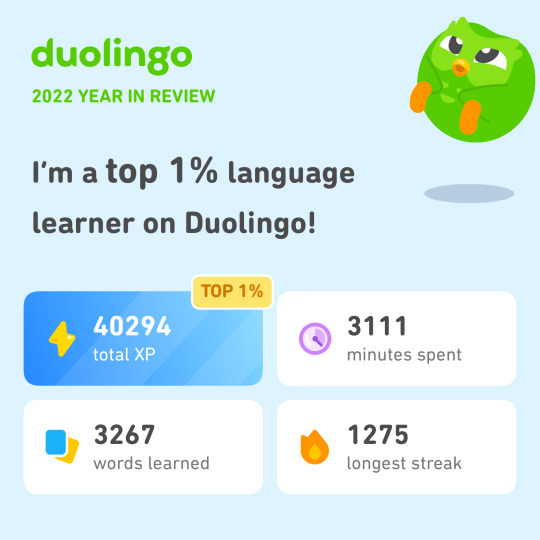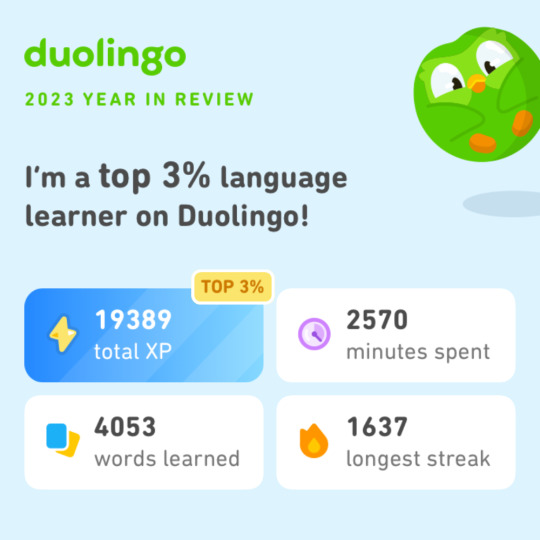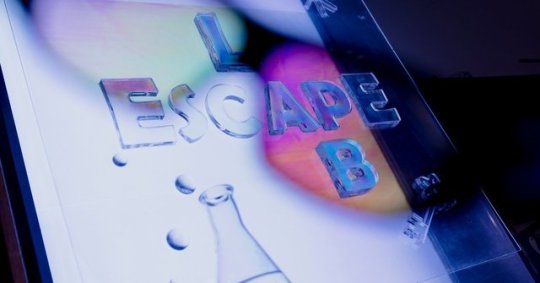#what a student teaching semester does to a devotee
Explore tagged Tumblr posts
Text




well…
#what a student teaching semester does to a devotee#alternatively what opting out of leagues does#I wanna really pick up next year though I’ll have more time#especially commit to Italian#locking it in#duolingo#langblr
45 notes
·
View notes
Photo

New Post has been published on https://toldnews.com/world/united-states-of-america/youve-conquered-the-escape-room-but-can-you-escape-the-lab/
You’ve Conquered the Escape Room. But Can You Escape the Lab?
URBANA, Ill. — It was 10 p.m., and we were locked in a room at the mall.
It had been a long day. I had woken up at 5 that morning to finish writing an article. Then I had spent a day talking to University of Illinois students and professors. The physics department had invited me and two other science writers to visit, part of an effort to help science and engineering students better explain what they do.
I had had a few glasses of wine at dinner.
And now here I was in a locked room at Lincoln Square Mall, straining to recall my ancient physics education in order to get out.
The four of us — me plus Phillip Schewe, a longtime science writer; David Ehrenstein, an editor at the American Physical Society; and Karin Dahmen, a physics professor at the University of Illinois at Urbana-Champaign — had an hour to figure out everything about a missing scientist.
The fate of the free world was at stake. Of course. This video laid out our mission.
Such “escape rooms” have become popular in recent years — immersive games where you and your friends (or strangers) search for clues and solve puzzles to defuse a simulated danger before time runs out.
Paul Kwiat, another University of Illinois physicist, is the creator of this particular escape room, which is one of the few, perhaps the only one, filled with puzzles that are based on science.
“Science can be fun,” he said. “Normally, people don’t include science and fun in the same sentence.”
Four years ago, Dr. Kwiat, who studies how to harness the properties of light for future quantum computers and encrypted communications, was attending a conference in Switzerland. He looked online for something fun to do in the off hours.
The destination with the highest rating on TripAdvisor was not a hiking trail or something historical or cultural, but an escape room. He and a colleague went. Neither had been in, or out of, an escape room before.
“It was superfun,” said Dr. Kwiat, even though they were unable to solve all of the Sherlock Holmes-themed puzzles in the allotted time. On the same trip, he did another escape room, in Prague. (He’s now done 25.)
He thought that someone ought to devise an escape room with science puzzles, and when the American Physical Society put out a call for “innovative outreach,” he started working on one himself.
For his girlfriend’s birthday, Dr. Kwiat put together a small test version. In the spring semester, he recruited undergraduates in a class he was teaching to refine the puzzles and build more rugged copies of them. He leased space in the mall, a former baby goods store.
He put together a story: The fictional Professor Alberta Schrödenberg has made a breakthrough in quantum computing while working for a government agency, the Disruptive Technology Office. But she was worried that enemy agents were closing in to steal her discovery.
Then she disappeared, leaving behind a secret laboratory with mysteries to be solved.
“For me, the best escape rooms are the ones with a good story line,” Dr. Kwiat said. “There’s a good reason you’re locked in a room, and there’s a good reason why there are puzzles, and there’s even a good reason why there are people giving you hints to those puzzles.”
In January 2017, LabEscape opened. (The $10,000 grant from the American Physical Society arrived four months later.) Some 4,700 people have now passed through. Dr. Kwiat has created a sequel scenario as well as a transportable prequel that he has taken to physics conferences.
Before entering, we were given several sheets describing some basic properties of light. We skimmed over information about different wavelengths of light, including radio waves and X-rays, and the law of refraction describing how light bends when entering a material like water or glass.
Dr. Kwiat said that it was not essential to memorize all of that knowledge, but good to look over and keep in mind.
Into the room we went.
As it turned out, a background in physics does not necessarily help. I’m a former graduate student who left Illinois a quarter century ago without my doctorate after deciding I was better at asking other scientists what the answer was.
Both David Ehrenstein and Phil Schewe finished Ph.D.s before also deciding they preferred the communications side of physics. And Karin Dahmen is a working physics professor.
But we lacked traits of accomplished escape room devotees. That included methodical organization — take an inventory of everything in the room — and focus. Communicate clearly with your teammates; don’t get distracted.
Dr. Schewe, for example, started browsing a stack of old Physics Today magazines in a bookcase. “Phil!” I said, exasperated. “Stop looking for your articles!” (Tip: Do not squander time reading the magazines. But you may want to take a careful look around there.)
In devising LabEscape, Dr. Kwiat came up with sleights-of-vision that seem like computer- generated special effects but instead manipulate phenomena of real materials.
To avoid spoiling the puzzles for future lab escapees, consider instead a plastic tank that once hung in LabEscape’s welcome area.
There, Dr. Kwiat took advantage of the optical alchemy of acrylic and corn syrup.
At first look, the tank was clear and seemingly empty. But put on a pair of 3-D IMAX glasses, and three-dimensional letters spelling LabEscape, fringed in psychedelic colors, suddenly appeared before you.
The tank was not empty, but filled with 18 gallons of corn syrup. The letters, made of acrylic, were also in there. But because the two materials possess roughly the same index of refraction, light passed from one through the other without bending, and the letters were almost invisible.
But corn syrup is also what scientists call “optically active,” because of the shape of its sugar molecules.
Polarized light — where the oscillating electric fields of the photons are lined up in parallel, like airplanes flying in formation — was directed into the tank. As the light passed through the syrup, the polarization rotated. (Think of the planes doing barrel rolls in synchrony.)
Blue light rotates about twice as much as red light. Because acrylic is not optically active, the rays that passed through the letters — and traveled through less of the syrup — had a different orientation.
Your eyes do not perceive polarization, but a polarizing filter in the IMAX glasses turned the invisible colorfully visible.
The sign is no longer there, because Dr. Kwiat overlooked another basic property of corn syrup — it’s denser than water. Under the strain of the extra weight, the plastic ruptured, unleashing a sticky deluge.
The escape room has been a learning experience for Dr. Kwiat in other ways.
One puzzle involves extracting a key to open a lock to get to another clue. Dr. Kwiat designed the solution, but was surprised when a participant figured out an alternative way of getting the key.
Then someone figured out a third way, and someone else figured out a fourth way. Eventually, he stopped being surprised. Now, escape room players have come up with 18 different ways of fishing out the key.
A debriefing after you finish your time locked in the room yields some fascinating tidbits. Did you know your digital camera can capture infrared light that your eyes cannot see? I didn’t.
And there really was a federal agency called the Disruptive Technology Office. Dr. Kwiat even got a grant from it.
But he isn’t expecting people to emerge educated about the index of refraction or how a laser works.
Instead, Dr. Kwiat hopes participants will better appreciate how scientists find beauty and awe in deciphering the universe.
“There’s a great sense of triumph when you overcome one of these puzzles,” he said. “Just as in science.”
Erica Phillpott, a receptionist at a fitness club, took her six children, ages ranging from 10 to 19, into LabEscape. At first, as she was looking at the sheets of science information, she was nervous.
“I just paid this man to add extra stress to my life,” she recalled thinking. “None of us really knows anything about science.”
But Ms. Phillpott and her children made it out of the room. “We saved the world,” she said.
Afterward, her 12-year-old daughter, whose birthday they were celebrating, got more excited about science. She now thinks she would like to study forensics or something similar.
“She really got the most out of it,” Ms. Phillpott said.
Even with the turnover of students at the university, there probably are not enough customers to keep LabEscape in business in Urbana indefinitely.
Dr. Kwiat envisions moving it to a science museum in a larger city and hopes that a company investing in quantum computing research — Google, perhaps, he said wistfully — might sponsor it.
The goal would not be to get people at a science museum to try an escape room, but the reverse: to entice escape room aficionados to visit a science museum.
As for the three science writers and the physicist, we, um, did not solve all of the problems and, when our time ran out, were banished to the “quantum realm.”
But it was fun way to end the day.
0 notes
Text
You’ve Conquered the Escape Room. But Can You Escape the Lab?
URBANA, Ill. — It was 10 p.m., and we were locked in a room at the mall.
It had been a long day. I had woken up at 5 that morning to finish writing an article. Then I had spent a day talking to University of Illinois students and professors. The physics department had invited me and two other science writers to visit, part of an effort to help science and engineering students better explain what they do.
I had had a few glasses of wine at dinner.
And now here I was in a locked room at Lincoln Square Mall, straining to recall my ancient physics education in order to get out.
The four of us — me plus Phillip Schewe, a longtime science writer; David Ehrenstein, an editor at the American Physical Society; and Karin Dahmen, a physics professor at the University of Illinois at Urbana-Champaign — had an hour to figure out everything about a missing scientist.
The fate of the free world was at stake. Of course. This video laid out our mission.
Such “escape rooms” have become popular in recent years — immersive games where you and your friends (or strangers) search for clues and solve puzzles to defuse a simulated danger before time runs out.
Paul Kwiat, another University of Illinois physicist, is the creator of this particular escape room, which is one of the few, perhaps the only one, filled with puzzles that are based on science.
“Science can be fun,” he said. “Normally, people don’t include science and fun in the same sentence.”
Four years ago, Dr. Kwiat, who studies how to harness the properties of light for future quantum computers and encrypted communications, was attending a conference in Switzerland. He looked online for something fun to do in the off hours.
The destination with the highest rating on TripAdvisor was not a hiking trail or something historical or cultural, but an escape room. He and a colleague went. Neither had been in, or out of, an escape room before.
“It was superfun,” said Dr. Kwiat, even though they were unable to solve all of the Sherlock Holmes-themed puzzles in the allotted time. On the same trip, he did another escape room, in Prague. (He’s now done 25.)
He thought that someone ought to devise an escape room with science puzzles, and when the American Physical Society put out a call for “innovative outreach,” he started working on one himself.
For his girlfriend’s birthday, Dr. Kwiat put together a small test version. In the spring semester, he recruited undergraduates in a class he was teaching to refine the puzzles and build more rugged copies of them. He leased space in the mall, a former baby goods store.
He put together a story: The fictional Professor Alberta Schrödenberg has made a breakthrough in quantum computing while working for a government agency, the Disruptive Technology Office. But she was worried that enemy agents were closing in to steal her discovery.
Then she disappeared, leaving behind a secret laboratory with mysteries to be solved.
“For me, the best escape rooms are the ones with a good story line,” Dr. Kwiat said. “There’s a good reason you’re locked in a room, and there’s a good reason why there are puzzles, and there’s even a good reason why there are people giving you hints to those puzzles.”
In January 2017, LabEscape opened. (The $10,000 grant from the American Physical Society arrived four months later.) Some 4,700 people have now passed through. Dr. Kwiat has created a sequel scenario as well as a transportable prequel that he has taken to physics conferences.
Before entering, we were given several sheets describing some basic properties of light. We skimmed over information about different wavelengths of light, including radio waves and X-rays, and the law of refraction describing how light bends when entering a material like water or glass.
Dr. Kwiat said that it was not essential to memorize all of that knowledge, but good to look over and keep in mind.
Into the room we went.
As it turned out, a background in physics does not necessarily help. I’m a former graduate student who left Illinois a quarter century ago without my doctorate after deciding I was better at asking other scientists what the answer was.
Both David Ehrenstein and Phil Schewe finished Ph.D.s before also deciding they preferred the communications side of physics. And Karin Dahmen is a working physics professor.
But we lacked traits of accomplished escape room devotees. That included methodical organization — take an inventory of everything in the room — and focus. Communicate clearly with your teammates; don’t get distracted.
Dr. Schewe, for example, started browsing a stack of old Physics Today magazines in a bookcase. “Phil!” I said, exasperated. “Stop looking for your articles!” (Tip: Do not squander time reading the magazines. But you may want to take a careful look around there.)
In devising LabEscape, Dr. Kwiat came up with sleights-of-vision that seem like computer- generated special effects but instead manipulate phenomena of real materials.
To avoid spoiling the puzzles for future lab escapees, consider instead a plastic tank that once hung in LabEscape’s welcome area.
There, Dr. Kwiat took advantage of the optical alchemy of acrylic and corn syrup.
At first look, the tank was clear and seemingly empty. But put on a pair of 3-D IMAX glasses, and three-dimensional letters spelling LabEscape, fringed in psychedelic colors, suddenly appeared before you.
The tank was not empty, but filled with 18 gallons of corn syrup. The letters, made of acrylic, were also in there. But because the two materials possess roughly the same index of refraction, light passed from one through the other without bending, and the letters were almost invisible.
But corn syrup is also what scientists call “optically active,” because of the shape of its sugar molecules.
Polarized light — where the oscillating electric fields of the photons are lined up in parallel, like airplanes flying in formation — was directed into the tank. As the light passed through the syrup, the polarization rotated. (Think of the planes doing barrel rolls in synchrony.)
Blue light rotates about twice as much as red light. Because acrylic is not optically active, the rays that passed through the letters — and traveled through less of the syrup — had a different orientation.
Your eyes do not perceive polarization, but a polarizing filter in the IMAX glasses turned the invisible colorfully visible.
The sign is no longer there, because Dr. Kwiat overlooked another basic property of corn syrup — it’s denser than water. Under the strain of the extra weight, the plastic ruptured, unleashing a sticky deluge.
The escape room has been a learning experience for Dr. Kwiat in other ways.
One puzzle involves extracting a key to open a lock to get to another clue. Dr. Kwiat designed the solution, but was surprised when a participant figured out an alternative way of getting the key.
Then someone figured out a third way, and someone else figured out a fourth way. Eventually, he stopped being surprised. Now, escape room players have come up with 18 different ways of fishing out the key.
A debriefing after you finish your time locked in the room yields some fascinating tidbits. Did you know your digital camera can capture infrared light that your eyes cannot see? I didn’t.
And there really was a federal agency called the Disruptive Technology Office. Dr. Kwiat even got a grant from it.
But he isn’t expecting people to emerge educated about the index of refraction or how a laser works.
Instead, Dr. Kwiat hopes participants will better appreciate how scientists find beauty and awe in deciphering the universe.
“There’s a great sense of triumph when you overcome one of these puzzles,” he said. “Just as in science.”
Erica Phillpott, a receptionist at a fitness club, took her six children, ages ranging from 10 to 19, into LabEscape. At first, as she was looking at the sheets of science information, she was nervous.
“I just paid this man to add extra stress to my life,” she recalled thinking. “None of us really knows anything about science.”
But Ms. Phillpott and her children made it out of the room. “We saved the world,” she said.
Afterward, her 12-year-old daughter, whose birthday they were celebrating, got more excited about science. She now thinks she would like to study forensics or something similar.
“She really got the most out of it,” Ms. Phillpott said.
Even with the turnover of students at the university, there probably are not enough customers to keep LabEscape in business in Urbana indefinitely.
Dr. Kwiat envisions moving it to a science museum in a larger city and hopes that a company investing in quantum computing research — Google, perhaps, he said wistfully — might sponsor it.
The goal would not be to get people at a science museum to try an escape room, but the reverse: to entice escape room aficionados to visit a science museum.
As for the three science writers and the physicist, we, um, did not solve all of the problems and, when our time ran out, were banished to the “quantum realm.”
But it was fun way to end the day.
Sahred From Source link Science
from WordPress http://bit.ly/2H0IBUx via IFTTT
0 notes
Text
Game-Based Learning Is Changing How We Teach. Here's Why.
Dan White, the co-founder and CEO of Filament Games, an educational video game developer based in Madison, WI, knows from personal experience that kids can get a lot more out of video games than entertainment, sharpened reflexes and enviable manual dexterity. Back in the '90s he was a devotee of Civilization, a game where players run an empire from the dawn of time to the Space Age. “Along that timeline you make all sorts of interesting strategic decisions about your empire,” says White. “Now I run a 40-person ‘empire’ at Filament. I have to do a lot of the same strategic thinking that I enjoyed doing in that game.”
EdSurge recently caught up with White to talk about how game-based learning (GBL) can help children develop the skills that will be essential in their future jobs, and how Minecraft, specifically, has influenced classroom education and the learning game industry. He also ponders whether games can both teach and measure 21st-century skills, considers the barriers to a broader use of GBL in schools and discusses the not-so-mysterious motivational power of Pokemon.
EdSurge: First things first. Why is game-based learning so relevant for students today?
Teachers can create almost any type of experience they want in Minecraft because it is such a malleable space.
Dan White: I recently saw an EdSurge Q&A where the former chief of Google China was quoted saying that within 15 years, nearly 50 percent of jobs in the U.S. will be done by machines with artificial intelligence. So it is going to be essential for students to have skills that are unique to the human brain. You often hear these skills—such as collaboration, problem solving, communication and critical thinking—referred to as higher-order thinking skills or 21st-century skills or future-ready skills. The exciting thing about game-based learning is that students are practicing these types of skills all the time when they play games. Even a game like Candy Crush is hitting some of these skills. And the more complex and challenging a game is, the more skills it’s going to hit.
What do these skills look like within an actual game?
Let’s say you are trying to teach your students about how stellar systems work. How do eclipses happen and why are there seasons? How does the earth move around the sun?
If you are teaching with Minecraft, for example, you can have students build their own models and come up with theories based on their understanding of how stellar systems work. Then they can have conversations about those models within the game space, and students can learn from each other. It matters less if they get the model right or wrong. What's important is that they are developing problem solving and communication skills as they try to represent their thinking in an immersive, three-dimensional space. That’s really powerful.
Teachers can create almost any type of experience they want in Minecraft because it is such a malleable space.
People love feeling empowered to make decisions; kids, especially, don’t get many opportunities to be in charge.
This may seem like an obvious question, but why do games engage kids more than traditional teaching methods that emphasize content?
Not for the reasons people usually point to, which are high-production value graphics and reward systems. Neither has much lasting engagement value. One big thing that does is agency—this idea that the player gets to make decisions. People love feeling empowered to make decisions; kids, especially, don’t get many opportunities to be in charge.
Having to master the system is another thing that hooks people. Take a classic game like chess: you can play it your entire life and never perfect it. A third reason is the opportunity to experiment with different identities in a safe environment where failure doesn’t matter. Instead of being a 12-year-old in Brooklyn, you get to be an astronaut or somebody who has abilities and masteries that are far beyond what you actually possess. And that’s particularly compelling for learning games because you can put students in roles that they would otherwise never be able to inhabit. And they can try on those roles and see what it feels like.
You hear people say, “I’m no good at math” or “I’m no good at science.” But you rarely hear someone say, “I’m no good at this game.” It’s usually, “This game is hard. I need to try again until I win.” Games encourage a growth mindset.
So, are there collateral effects where kids are motivated to read, write, learn math—so they get better at the game?
Games encourage a growth mindset.
Absolutely. Linguistics expert Jim Gee used to talk about how the Pokemon card game was an extremely effective tool for helping kids get past the so-called fourth-grade slump, which is when many students begin to struggle with advanced reading challenges and testing. He said students want so badly to get good at Pokemon that they will figure out how to read text that is far above their reading level—just so that they can figure out what abilities their game characters have. That’s really the beauty of a system that creates compelling mastery goals. Students will go to great lengths to get good at the system.
How widespread are learning games in America’s classrooms right now?
A lot of people who say they are using games are basically using quiz games. If the question is how many are using true game-based learning with problems spaces—frameworks for defining a problem and finding a solution—I’d say probably 10 percent or less of teachers use those games.
The thing that’s unique about Minecraft is that it was a runaway success on the consumer side first, and you sort of had this critical mass of people outside of school who were talking about it 24/7. It got to the point where the education community had to go, 'Wow, this platform really resonates with the people we are trying to reach. So why don’t we try to use it as a vehicle to reach them?'
Want to give Minecraft a whirl in your classroom? Try Minecraft: Education Edition for free!
In the education community, we pay lip service to 21st-century skills, but they aren’t really on the high-stakes test at the end of the semester.
What are the barriers to getting true game-based learning into the classroom?
My perspective is that most of it comes back to time and curriculum. In the education community, we pay lip service to 21st-century skills, but they aren’t really on the high-stakes test at the end of the semester. Now if the test changed and you saw an emphasis on those skills—and if you could demonstrate that games were a more effective way to teach them than a lecture or a reading—then I think you’d see the adoption skyrocket. But it’s very hard to create tests that measure 21st-century skills.
There are a lot of people, myself included, who believe games can be used both to teach and measure those skills. Most game spaces are by design complex problem spaces. The game is collecting all the data you need based on the player’s input. If you know what to look for, you can see whether a player is getting better at a skill vs. not. I think there is a ton of promise that is still yet to be fully understood.
You’ve said that Minecraft has had a big influence the learning-game industry. How so?
Dan White's Favorite Teaching Resources
Edsurge
Jim Gee’s book, What Video Games Have To Teach Us About Learning and Literacy
The movie, Most Likely to Succeed
iCivics
Filament Games Podcast
Games for Change
The most obvious takeaway for the learning game community is that one path to get a learning game adopted in schools is to first be really successful on the consumer side; but that’s not exactly the path of least resistance. Minecraft made the learning game community think about how it can leverage what’s already popular and interesting to kids outside of school in order to create more quality opportunities for learning inside of school. And it’s been really cool to see how teachers use Minecraft, given that it is a totally open-ended sandbox space where students A, B and C are going to have completely different experiences. For the learning game community, the platform has been a very positive thing; it has introduced a lot of teachers to this genre of play and made the education community more receptive to it. Without Minecraft, that might have taken longer and been more difficult.
Filament is right now working on a robotics game, where students in this sandbox space can build pretty much any robot they can imagine to solve specific challenges. It will be really interesting to see how receptive teachers are, because we’ve never created a sandbox style game like this specifically for the classroom. Because Minecraft broke a lot of ice, my hope is that this idea will be less foreign to that community than it might have otherwise been.
Game-Based Learning Is Changing How We Teach. Here's Why. published first on https://medium.com/@GetNewDLBusiness
0 notes